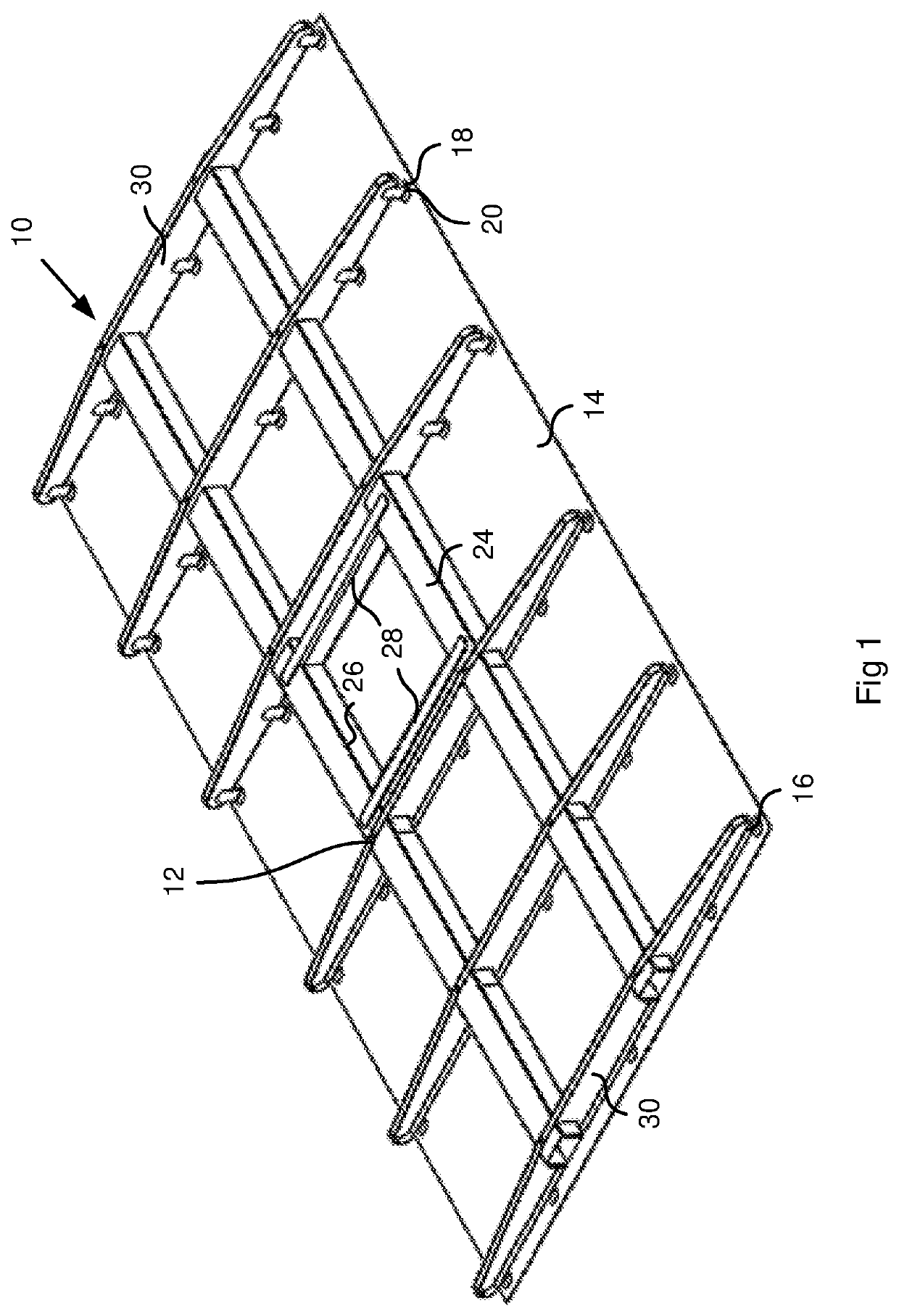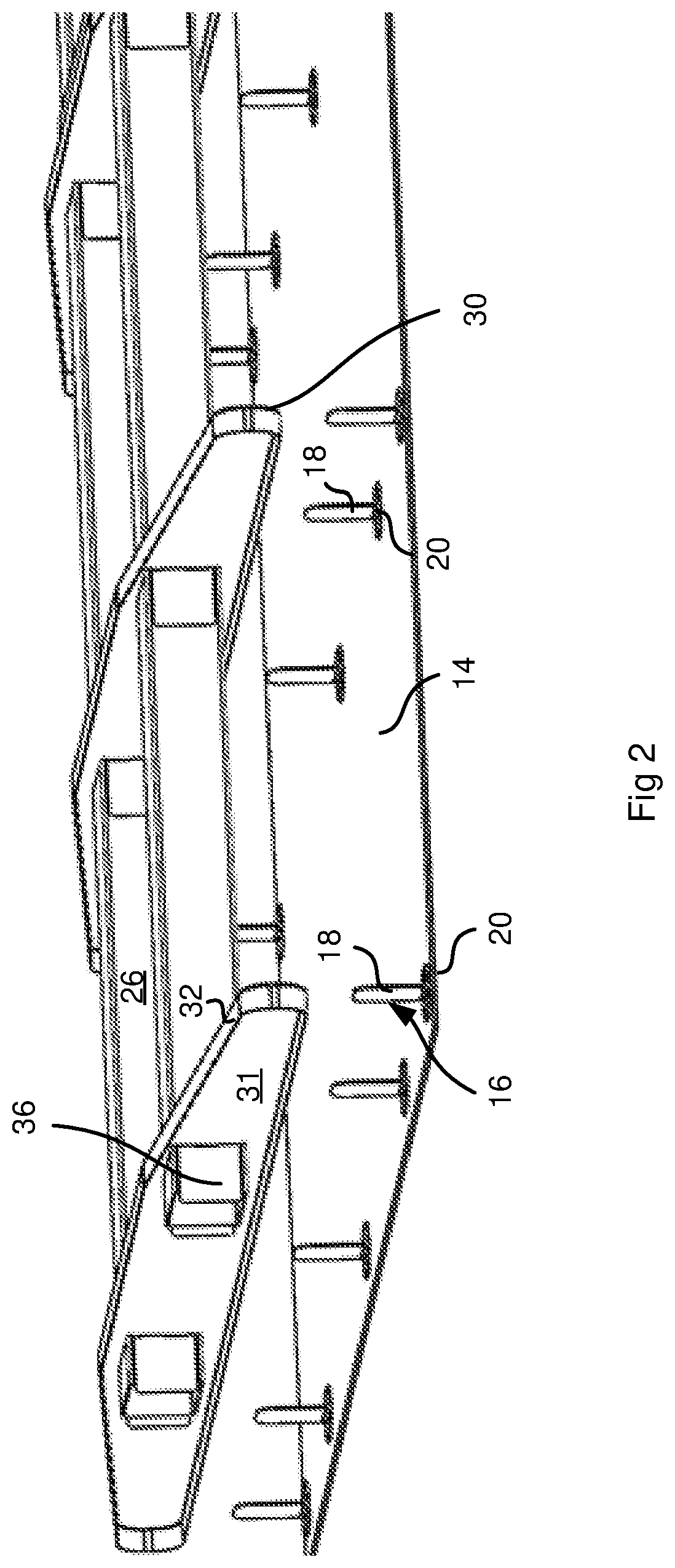A heliostat sub-assembly
a technology of heliostats and sub-assemblies, which is applied in the direction of heat collector mounting/supports, lighting and heating apparatus, instruments, etc., can solve the problems of glue taking some time to cure fully, and the manufacturing process of lightweight steel frames of these dimensions is difficult, so as to facilitate the alignment of faces
- Summary
- Abstract
- Description
- Claims
- Application Information
AI Technical Summary
Benefits of technology
Problems solved by technology
Method used
Image
Examples
first embodiment
[0059]Once the riser sub-assemblies 40 have cured and are firmly bonded to the inner face of the mirror 14A, the outer face of the mirror is bent to the desired parabolic shape over a forming jig or die with an adjustable parabolic curve in the z-plane about both the x-and y-axes in the manner previously described with reference to the It should be noted that while the desired shape of the final mirror and frame after the jig is removed is paraboloid or spherical / spheroid the jig may need to move the mirror into a slightly different shape so that it relaxes into the desired final shape after the jig is removed and the load is taken up by the glue and the frame.
[0060]Referring now to FIG. 9, a frame 86 is shown being lowered towards the rear face of the mirror 14A and riser sub-assemblies 40, with the mirror being bent to the desired shape over the forming jig (not shown). The frame 86 includes four equi-spaced purlins or ribs 88 having a U-shaped profile terminating in outwardly fl...
second embodiment
[0062]An advantage of the second embodiment is that it provides small amounts of play that allow the riser tabs to rotate a little from being perfectly normal to the mirror, and allow the foot portion of the riser tabs to slide a little parallel to the mirror. This allows the risers to be fixed to a frame that has a different coefficient of thermal expansion than the glass. Changes in temperature therefore allow the frame to expand parallel to the glass without building up stresses in the glass, while retaining the frame's ability to provide precise location of the glass in the direction orthogonal to the plane of the glass. Similarly the pin rotation or universal canting ability allows the glass to be slightly curved to generate the focusing shape desirable for the mirror, and allows the small relative rotation of the pin to accommodate this rotation without placing rotational stress on the glued pad.
[0063]In some embodiments clinching jigs may also be used to clinch the riser stem...
PUM
 Login to View More
Login to View More Abstract
Description
Claims
Application Information
 Login to View More
Login to View More - R&D
- Intellectual Property
- Life Sciences
- Materials
- Tech Scout
- Unparalleled Data Quality
- Higher Quality Content
- 60% Fewer Hallucinations
Browse by: Latest US Patents, China's latest patents, Technical Efficacy Thesaurus, Application Domain, Technology Topic, Popular Technical Reports.
© 2025 PatSnap. All rights reserved.Legal|Privacy policy|Modern Slavery Act Transparency Statement|Sitemap|About US| Contact US: help@patsnap.com



